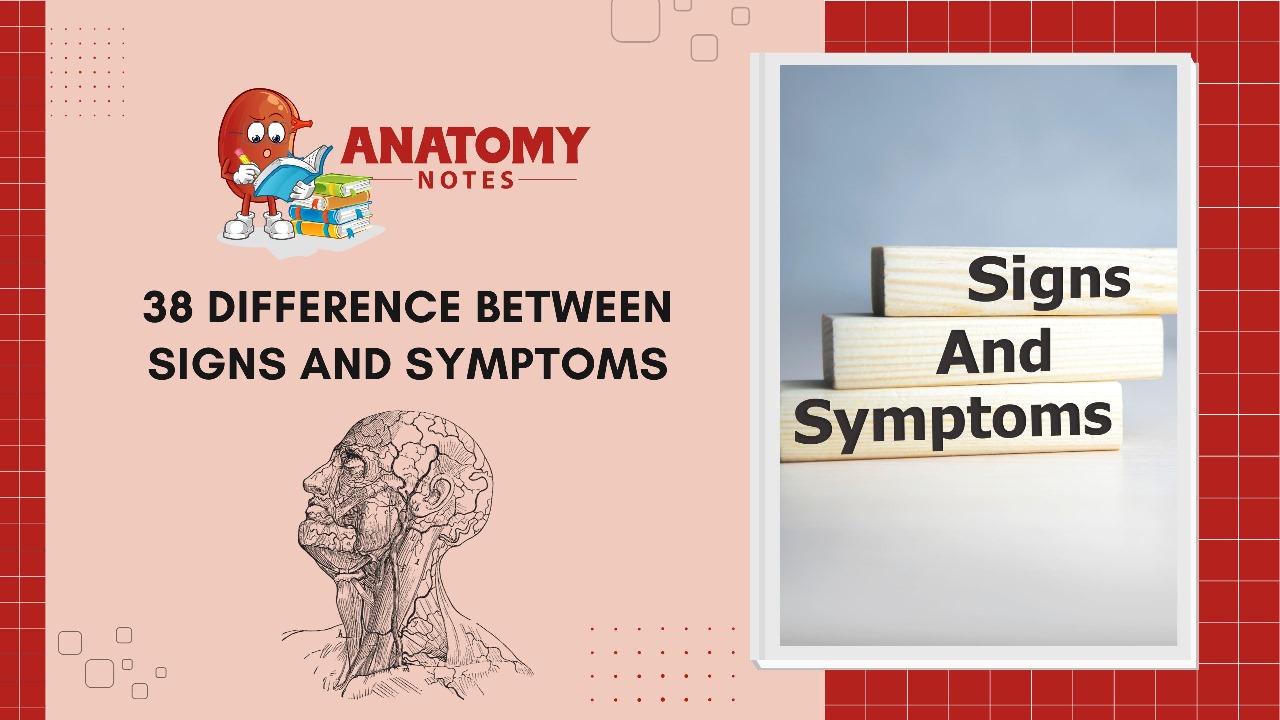Medical diagnosis and evaluation depend on signs and symptoms to detect health disorders. They’re commonly used interchangeably, but healthcare workers need to know the difference. Medical signs are objective, visible, and measured. Medical professionals discover them during physical exams or diagnostic examinations. Signs might include a high body temperature, abnormal test results, visible rashes, edema, or changes in vital signs like blood pressure, pulse, or respiration. Signs assist doctors in diagnosing a patient’s health conditions since they are concrete and quantitative.
However, symptoms are patient-reported health impressions. Symptoms include soreness, weariness, nausea, disorientation, and discomfort. Patients might convey these feelings to doctors to express their physical and emotional experiences. Due to their variability, symptoms are essential to a patient’s medical history. Healthcare practitioners must understand and manage symptoms to customize therapy and provide patient-centered care.
Signs are outward and visible to healthcare experts, whereas symptoms are internal and only recognized by the patient. Because they are objective and less subjective, indicators are more trustworthy for diagnosis. However, symptoms might be affected by a patient’s emotional state, psychological issues, or cultural beliefs, making them less trustworthy for diagnosis but still important for understanding health.
Signs and symptoms are essential to medical diagnosis, evaluation, and therapy. Clinical signs are objective, measurable data that doctors notice, whereas patient symptoms are subjective. Healthcare practitioners use signs and symptoms to diagnose and treat patients. Signs and symptoms must be distinguished for thorough healthcare evaluation and therapy.
|
S.No. |
Aspect |
Subject |
Subject |
||
|
1 |
Definition |
Signs |
Symptoms |
||
|
2 |
Nature |
Objective |
Subjective |
||
|
3 |
Observable |
Yes |
No |
||
|
4 |
Measured |
Clinically |
Patient’s Report |
||
|
5 |
Reliability |
Consistent |
Variable |
||
|
6 |
Diagnosed by |
Healthcare Pros |
Patient |
||
|
7 |
Examples |
Fever |
Pain |
||
|
8 |
Communicated |
Visually |
Verbally |
||
|
9 |
Quantifiability |
Measurable |
Not Easily Measurable |
||
|
10 |
Location |
Specific |
Vague |
||
|
11 |
Duration |
Instantaneous |
Ongoing |
||
|
12 |
Objectivity |
Objective |
Subjective |
||
|
13 |
Cause |
Direct Result |
Indicator of Disease |
||
|
14 |
Frequency |
Constant |
Variable |
||
|
15 |
Impact |
External |
Internal |
||
|
16 |
Treatment |
Directed at Cause |
Symptom Relief |
||
|
17 |
Sensitivity |
Less Affected by Emotions |
Highly Affected by Emotions |
||
|
18 |
Monitoring |
Often Required |
May Not Be Monitored |
||
|
19 |
Examples |
Swelling |
Nausea |
||
|
20 |
Evaluation |
By Healthcare Pro |
Self-evaluation |
||
|
21 |
Diagnostic Tools |
Useful |
Limited Use |
||
|
22 |
Onset |
Acute |
Gradual |
||
|
23 |
Severity |
Objective Measure |
Subjective Assessment |
||
|
24 |
Progression |
May Change Rapidly |
Usually Gradual |
||
|
25 |
Perception |
External Source |
Individual Sensation |
||
|
26 |
Origin |
External Source |
Internal Body |
||
|
27 |
Localization |
Specific to Disease |
Difficult to Localize |
||
|
28 |
Reliability in Diagnosis |
High |
Lower |
||
|
29 |
Subject’s Role in Diagnosis |
Minimal |
Central |
||
|
30 |
Recording in Medical Records |
Standard Practice |
May Be Omitted |
||
|
31 |
Object of Treatment |
Disease Itself |
Patient’s Discomfort |
||
|
32 |
Examples |
Rash |
Fatigue |
||
|
33 |
Use in Research |
Yes |
Limited Use |
||
|
34 |
Communication |
Can’t Be Controlled |
Can Be Controlled |
||
|
35 |
Subjective Interpretation |
Not Required |
Often Required |
||
|
36 |
Progress Tracking |
Objective Measures |
Subjective Reporting |
||
|
37 |
Invasiveness |
Not Invasive |
Can Be Invasive |
||
|
38 |
Examples |
Redness |
Dizziness |
Frequently Asked Questions (FAQs)
Q1: What distinguishes signs and symptoms in medical diagnosis?
They differ mostly in nature and source. Signs are objective, quantifiable, and recognized by healthcare experts during exams or tests, whereas symptoms are patient-reported health assessments. Signs are outward and quantifiable, making them vital for medical diagnosis, whereas symptoms are interior and vary greatly.
Q2: Why are indicators more diagnostic than symptoms?
Due to their objectivity and lack of interpretation, signs are typically trusted. They give concrete medical evidence, making them essential diagnostic tools. However, a patient’s emotional state, psychological circumstances, and cultural beliefs might affect symptoms, making them less dependable for diagnosis.
Q3: How do doctors diagnose and treat patients using symptoms?
Healthcare practitioners evaluate patients’ health using signs and symptoms. Signs indicate medical conditions and lead to diagnostic tests. However, symptoms reveal how the illness affects the patient’s everyday life and well-being. Signs and symptoms help modify treatment approaches and provide patient-centered care.
Q4: How do overlapping indications and symptoms affect diagnosis?
Symptoms and indicators might overlap. A patient with a fever may describe feeling hot and chills while the doctor measures a higher body temperature. This overlap might offer diagnostic information but complicate evaluation. Signs and symptoms must be considered by doctors to diagnose and treat.
Q5: How are contradictory symptoms handled?
Yes, signals and symptoms can conflict. A patient may express extreme weariness despite normal blood pressure and heart rate. Healthcare practitioners use further testing and a detailed medical history to resolve inconsistencies. Contradictory results may require further testing to identify health concerns.




